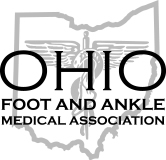Compliance Dates
This new webpage will continue to be developed. If there is compliance information you would like to see included please email OHFAMA with the request: lridolfo@ohfama.org
Board of Pharmacy
Effective August 31, 2017, the State of Ohio will have new rules for prescribing opioid analgesics for the treatment of acute pain. Please be advised, these rules DO NOT apply to the use of opioids for the treatment of chronic pain.
In general, the rules limit the prescribing of opioid analgesics for acute pain, as follows:
- No more than seven days of opioids can be prescribed for adults.
- No more than five days of opioids can be prescribed for minors and only after the written consent of the parent or guardian is obtained.
- Health care providers may prescribe opioids in excess of the day supply limits only if they provide a specific reason in the patient’s medical record.
- Except as provided for in the rules, the total morphine equivalent dose (MED) of a prescription for acute pain cannot exceed an average of 30 MED per day.
- The new limits do not apply to opioids prescribed for cancer, palliative care, end-of-life/hospice care or medication-assisted treatment for addiction.
- The rules apply to the first opioid analgesic prescription for the treatment of an episode of acute pain.
A guidance document and links to the rules for prescribers can be accessed at: www.pharmacy.ohio.gov/AcuteLimits. NOTE: These rules do not apply to veterinarians.
Rule 4729-5-30 – Manner of Issuance
- Starting December 29, 2017, rule 4729-5-30 will require prescribers to include the first four characters (ex. M16.5) of the diagnosis code (ICD-10) or the full procedure code (Current Dental Terminology - CDT) on all Opioid prescriptions, which will then be entered by the pharmacy into OARRS.
- Starting June 1, 2018, this requirement will take effect for all other controlled substance prescriptions.
- Starting December 29, 2017, rule 4729-5-30 will also require prescribers to indicate the days’ supply on all controlled substance and gabapentin prescriptions.
Effective December 29, 2017, rule 4729-37-05 requires the use of the ASAP Version 4.2A Standard for reporting dispensing information to OARRS. Pharmacies should begin contacting software vendors now to be able to implement this change by the effective date of the rule.
For additional questions regarding the proposed rules, please review frequently asked questions by visiting: www.pharmacy.ohio.gov/AcuteFAQ. If you need additional information, the most expedient way to have your questions answered will be to email the Board office by visiting: http://www.pharmacy.ohio.gov/contact.aspx.





